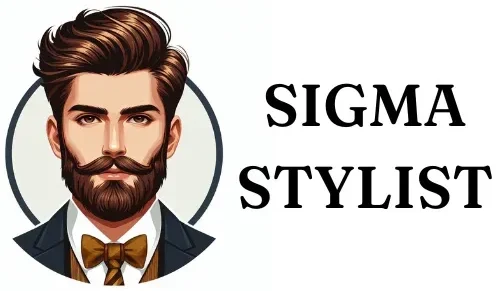The 1980s was a decade of bold fashion choices, and hairstyles were no exception. Boys and young men embraced a wide range of cuts that reflected the era’s vibrant and daring spirit.
From punk-inspired looks to preppy classics, 80s hairstyles for boys were all about making a statement.
Whether you’re looking to recreate a vintage look or simply draw inspiration from this iconic decade, here’s a comprehensive guide to the top 20 80s boy haircuts that defined an era.
1. The Mullet
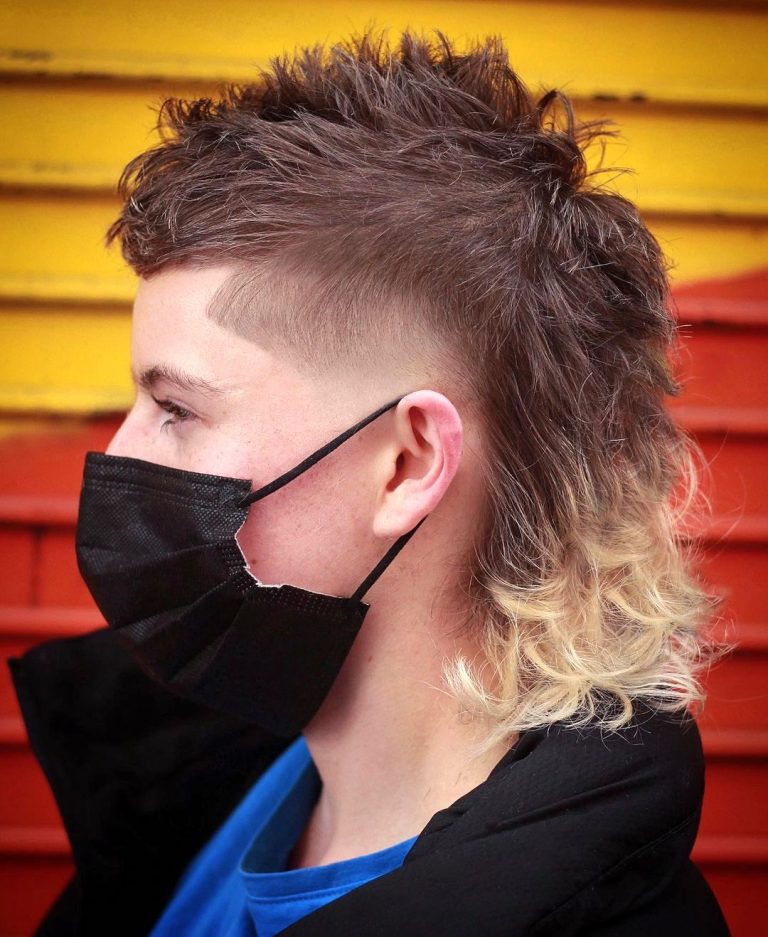
The mullet is perhaps the most iconic 80s hairstyle, epitomizing the “business in the front, party in the back” mentality. This distinctive cut features shorter hair on the top and sides, with longer strands flowing down the back of the neck. The mullet was popularized by celebrities like Billy Ray Cyrus and Patrick Swayze, becoming a symbol of rebellious cool.
To achieve the perfect mullet, hair was typically cut short on the crown and around the ears, gradually increasing in length towards the nape. The back section could range from shoulder-length to as long as mid-back, depending on personal preference. Styling often involved blow-drying the top for volume and letting the back fall naturally or adding some light styling for a more polished look.
2. The Flat Top

The flat top was a military-inspired cut that gained massive popularity among boys and young men in the 80s. This style is characterized by hair cut very short on the sides and back, with the top hair cut to stand upright and create a flat, level surface – hence the name.
Achieving the perfect flat top required regular maintenance and a good amount of strong-hold gel or mousse. The hair on top was typically cut to different lengths, shorter at the back and gradually longer towards the front, to create the level surface when styled upright. The flat top was often combined with a high fade on the sides for a more dramatic look. This style was favored by those wanting a clean-cut, masculine appearance and was particularly popular in hip-hop culture.
3. The Feathered Look
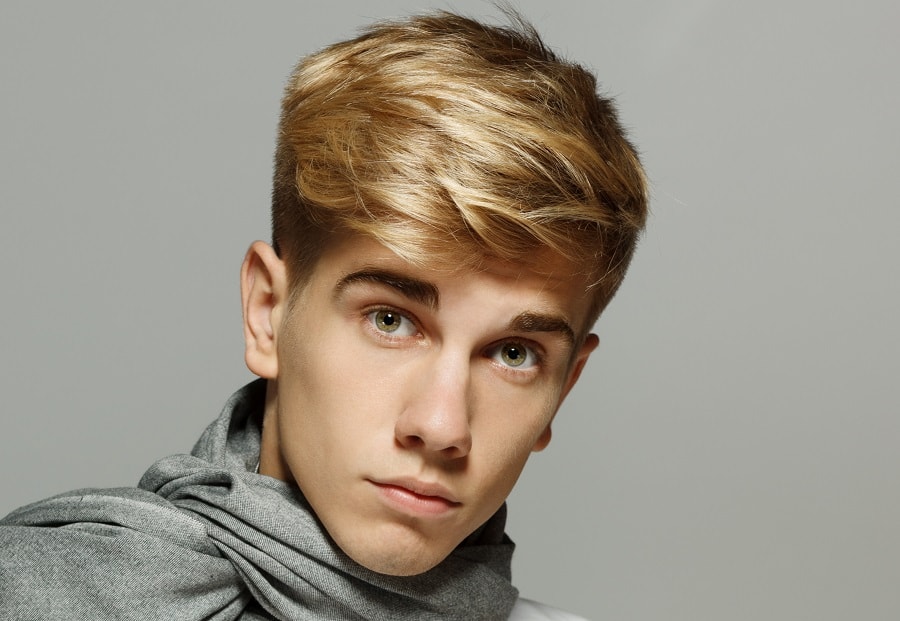
Inspired by 70s icons like Farrah Fawcett, the feathered hairstyle made its way into boys’ fashion in the 80s. This soft, layered look was characterized by hair parted down the middle or on the side, with the layers styled outward to create a wing-like effect reminiscent of feathers.
To achieve this look, hair was cut in long layers and blow-dried outwards using a round brush. The key was to create volume at the roots while ensuring the ends flipped out smoothly. Popular among teen heartthrobs of the time, this style offered a softer alternative to some of the decade’s more aggressive cuts. It worked well for boys with naturally straight to wavy hair and could be adapted for various lengths, from chin to shoulder.
4. The Flamboyant Style
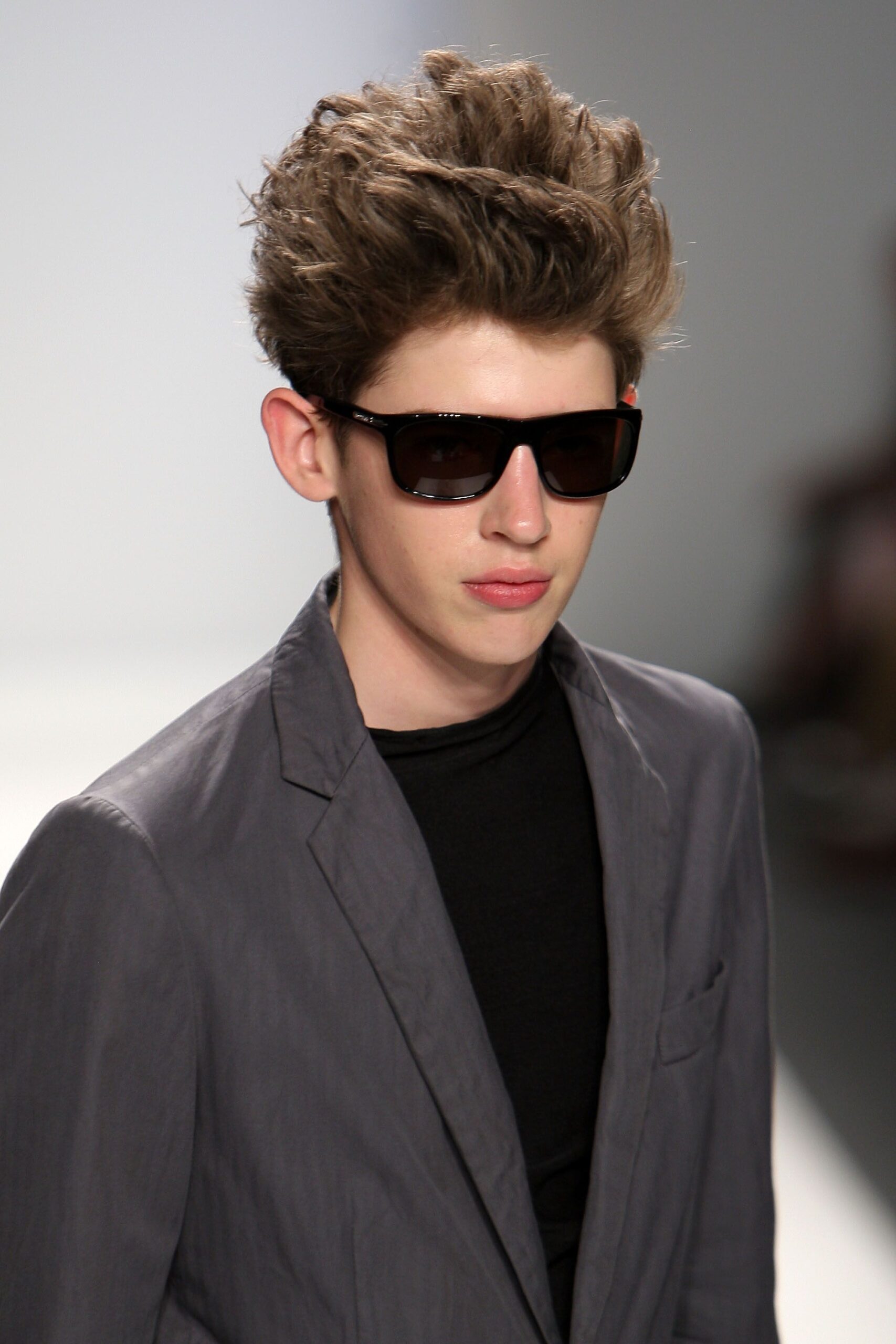
Emerging from the New Romantic music scene, this flamboyant style was all about volume, asymmetry, and drama. Characterized by long, often colored hair styled into elaborate shapes, the New Romantic look was for boys who weren’t afraid to make a bold statement.
This hairstyle typically involved growing the hair long and using a combination of backcombing, hairspray, and sometimes even hair extensions to create gravity-defying styles. Common elements included high quiffs, side-swept bangs, and deliberately messy textures. Bands like Duran Duran and A Flock of Seagulls popularized variations of this look, inspiring a generation of boys to experiment with their hair in creative ways.
5. The Jheri Curl
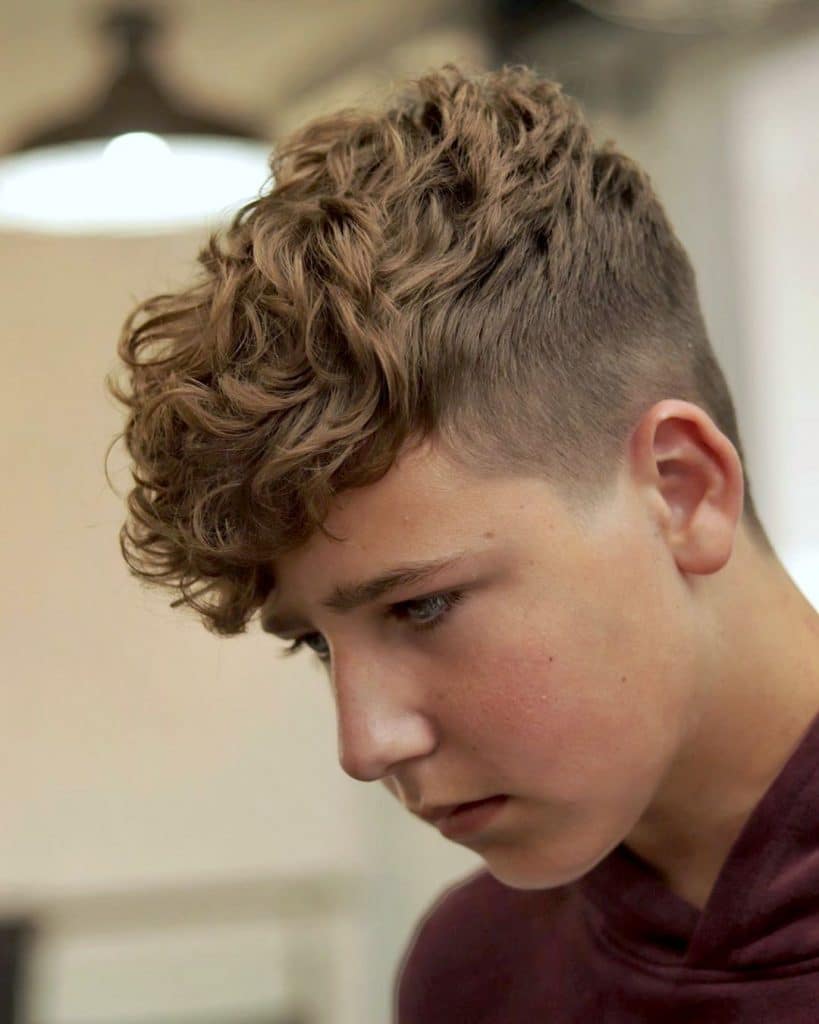
Named after its creator, Jheri Redding, the Jheri Curl was a glossy, loosely curled style that became incredibly popular among African American boys and men in the 80s. This chemical process involved softening and loosening the natural curl pattern of the hair to create a head full of soft, shiny curls.
The Jheri Curl required significant maintenance, including regular use of specialized moisturizing products to keep the curls defined and prevent dryness. The style was famously worn by Michael Jackson during the “Thriller” era and became synonymous with 80s R&B and pop culture. While it fell out of favor due to its high maintenance and the tendency of the products to stain clothing and furniture, the Jheri Curl remains an iconic 80s look.
6. The Pompadour
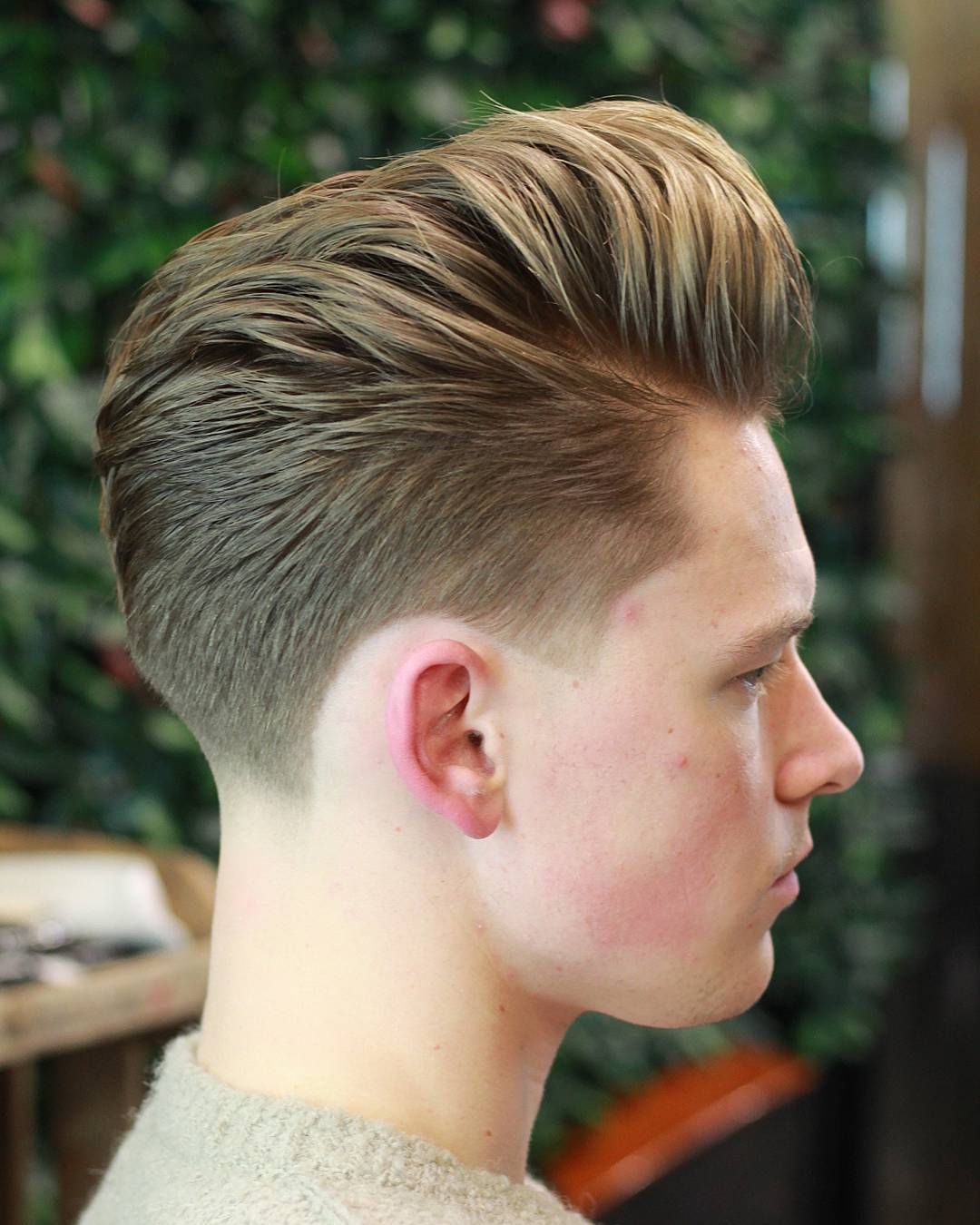
The pompadour, a classic style from the 1950s, saw a resurgence in the 1980s with a more exaggerated and voluminous twist. This hairstyle is characterized by hair swept upwards and backwards from the forehead, creating a large, rounded shape at the front.
To achieve the 80s pompadour, hair was left longer on top while the sides and back were cut shorter. Styling involved using a strong-hold gel or mousse to create height and shape at the front, often with the help of a blow dryer and round brush. The sides were typically slicked back for contrast. This style was popular among rock and rockabilly musicians, giving a rebellious yet polished look. It worked well for boys with thick, straight to wavy hair and was often combined with sideburns for added effect.
7. The Rat Tail
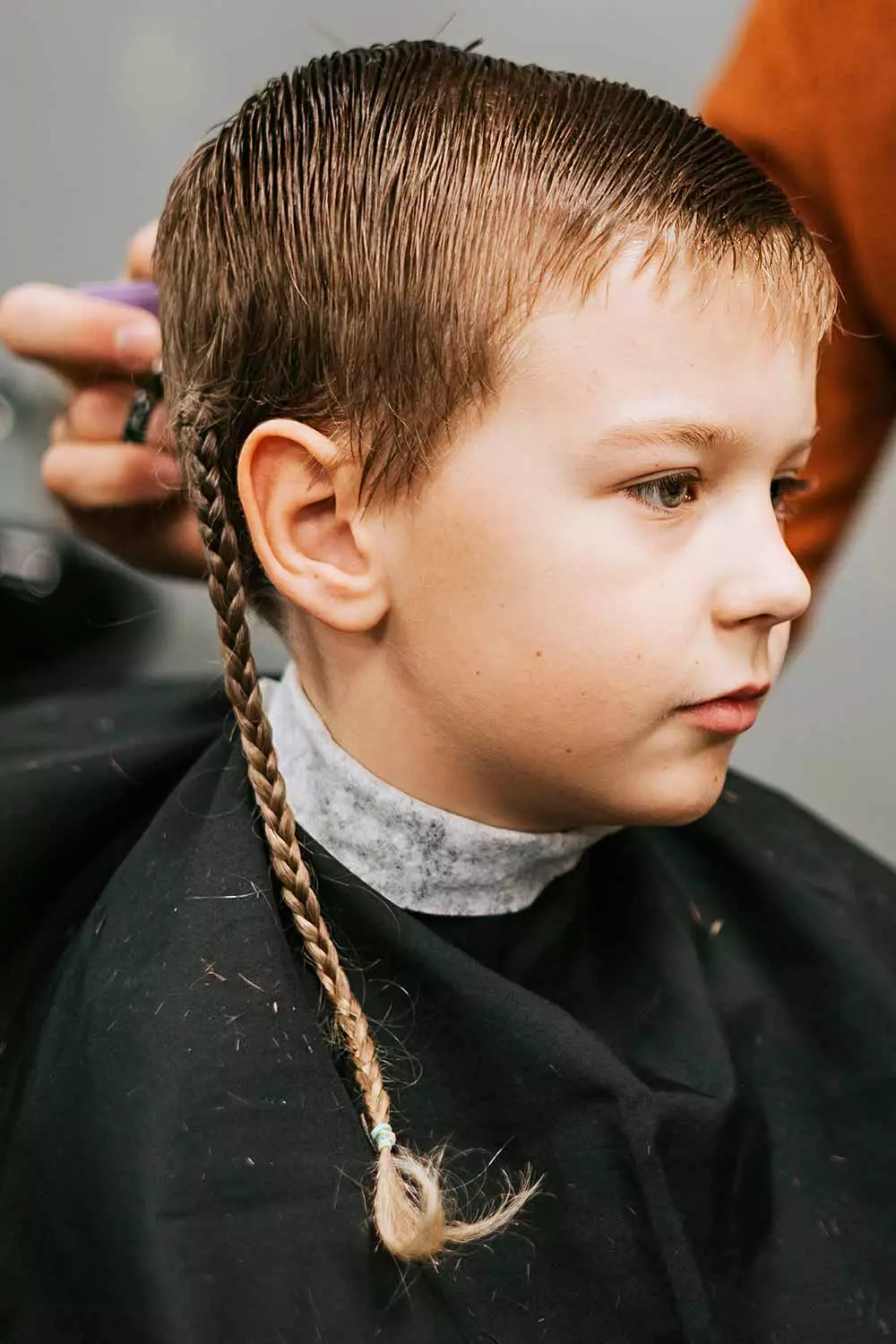
One of the more controversial styles of the 80s, the rat tail was a thin strand of hair left long at the nape of the neck while the rest of the hair was cut short. This peculiar style gained popularity among young boys and teenagers who wanted to rebel against conventional haircuts.
The rat tail could vary in length, from just a few inches to as long as mid-back. It was often braided or left loose and sometimes even dyed a different color for added impact. While it was easy to maintain, the rat tail was often seen as a symbol of nonconformity and was frequently banned in schools. Despite (or perhaps because of) its divisive nature, the rat tail remained a memorable part of 80s hair culture.
8. The New Wave
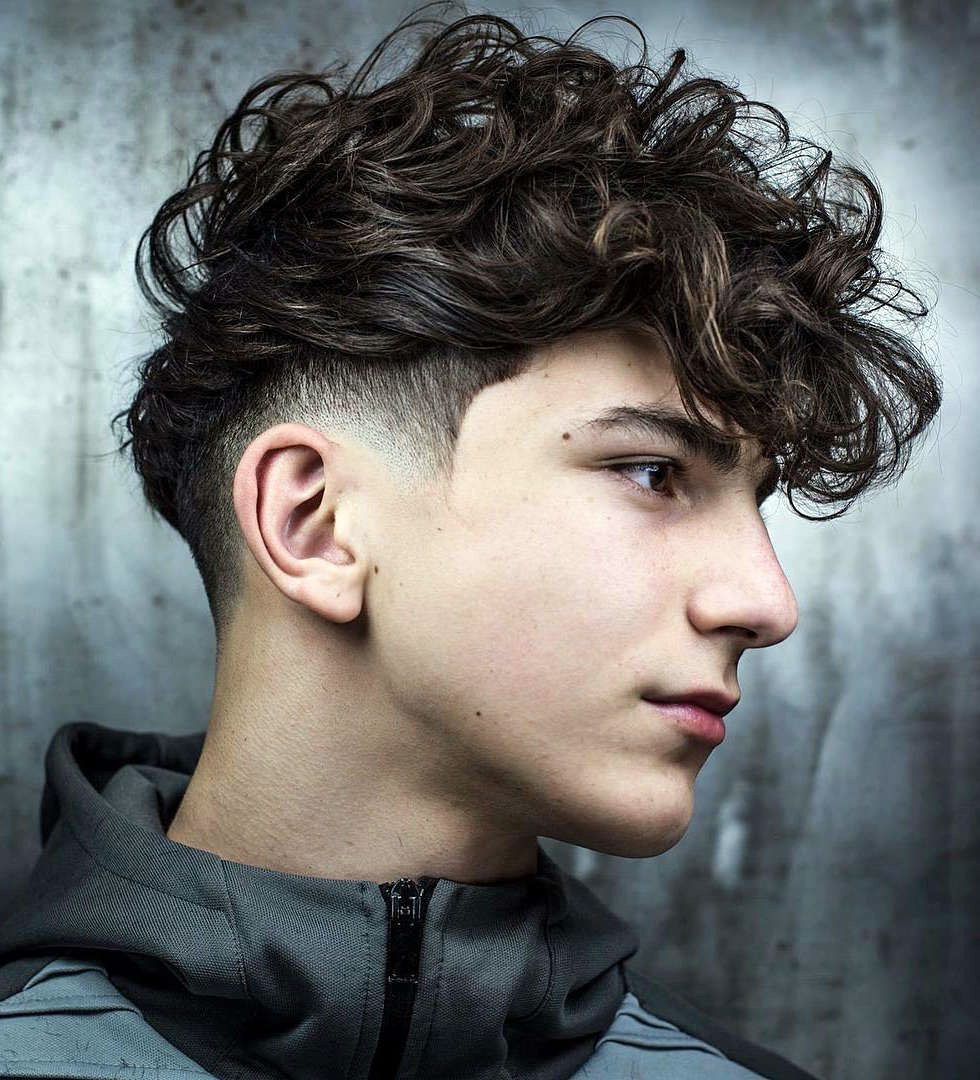
The New Wave hairstyle, associated with the music genre of the same name, was all about asymmetry and edginess. This style typically featured short, spiky hair on top with longer strands strategically placed for a dramatic, avant-garde look.
To achieve the New Wave look, hair was cut in an asymmetrical fashion, often with one side longer than the other. The top was usually cut short and styled into spikes using gel or wax. Color played a big role in this style, with many opting for bleached blonde or even vivid, unnatural colors. Bands like A Flock of Seagulls popularized extreme versions of this look, inspiring boys to experiment with unconventional shapes and textures in their hair.
9. The Preppy Side Part
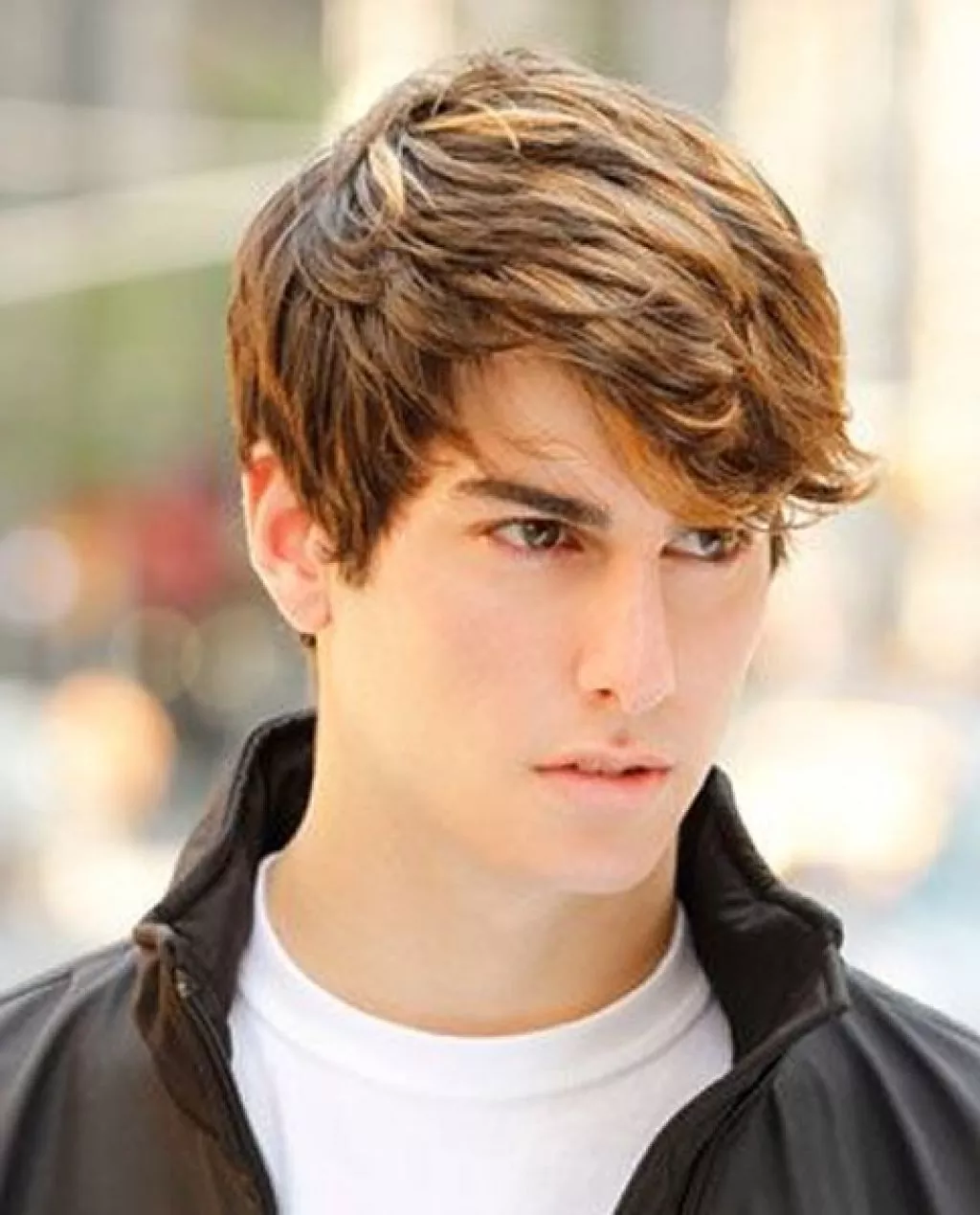
In contrast to some of the more outrageous styles of the decade, the preppy side part offered a clean, conservative look that was popular among school-going boys and young professionals. This classic style was characterized by a deep side part and neatly combed hair.
To achieve this look, hair was cut short to medium length, with enough length on top to create a part. The hair was then combed to the side, following the natural part line or creating a deeper part for more drama. A small amount of pomade or gel was used to keep everything in place. This style was often associated with ivy league schools and upper-class society, reflecting a neat and tidy appearance that contrasted with the wild styles of the era.
10. The Slick Back
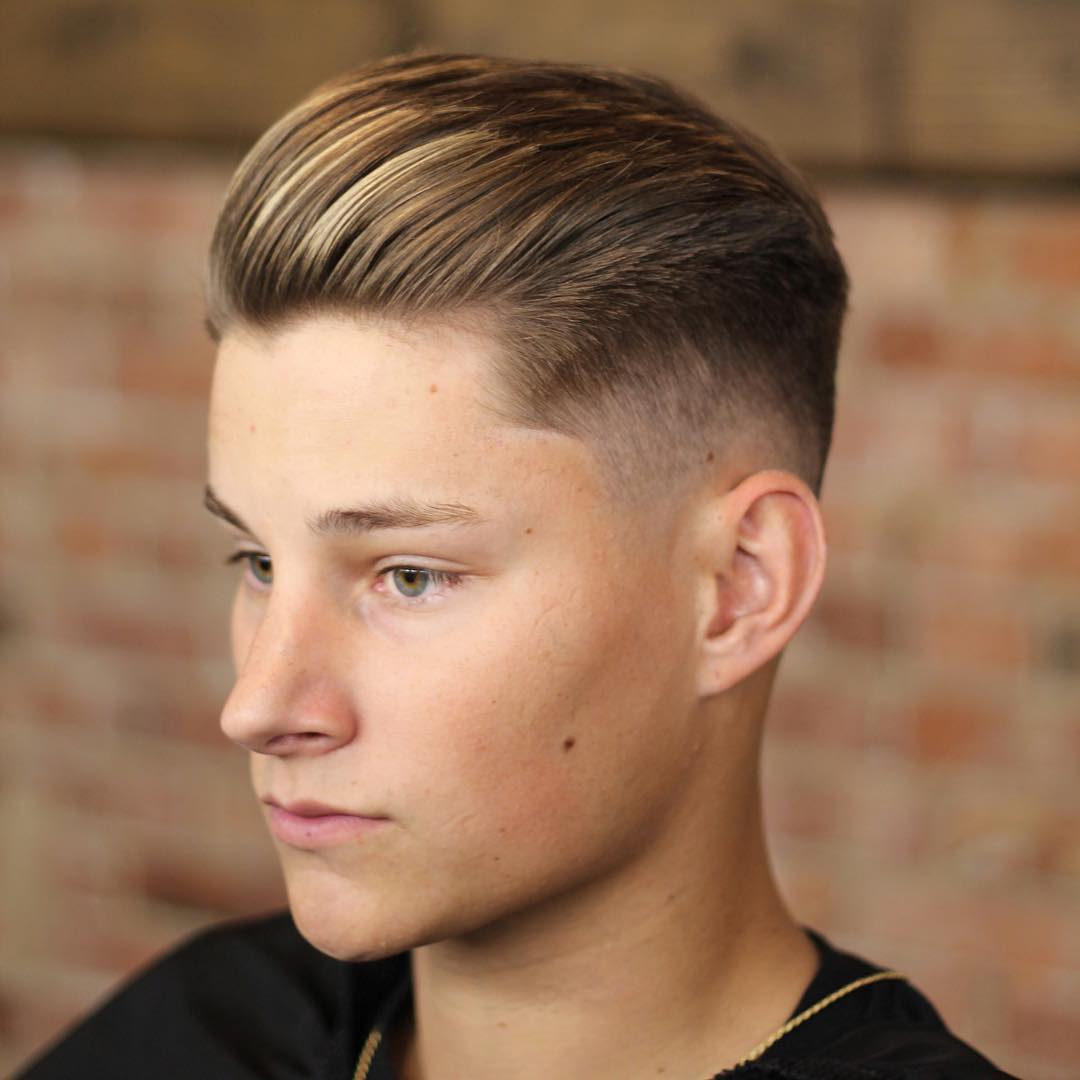
The slick back was a sleek, sophisticated style that gained popularity in the latter half of the 80s. This look involved combing all the hair straight back from the forehead, creating a smooth, glossy appearance.
To achieve the slick back, hair was typically cut to a medium length all over, with maybe slightly more length on top. The key to this style was in the product and technique used to style it. A generous amount of gel or pomade was applied to damp hair, which was then combed back away from the face. Some variations included a slight part or a more voluminous top. This style was popular among businessmen and was also adopted by some rock stars for a more polished look on stage.
11. The Mohawk
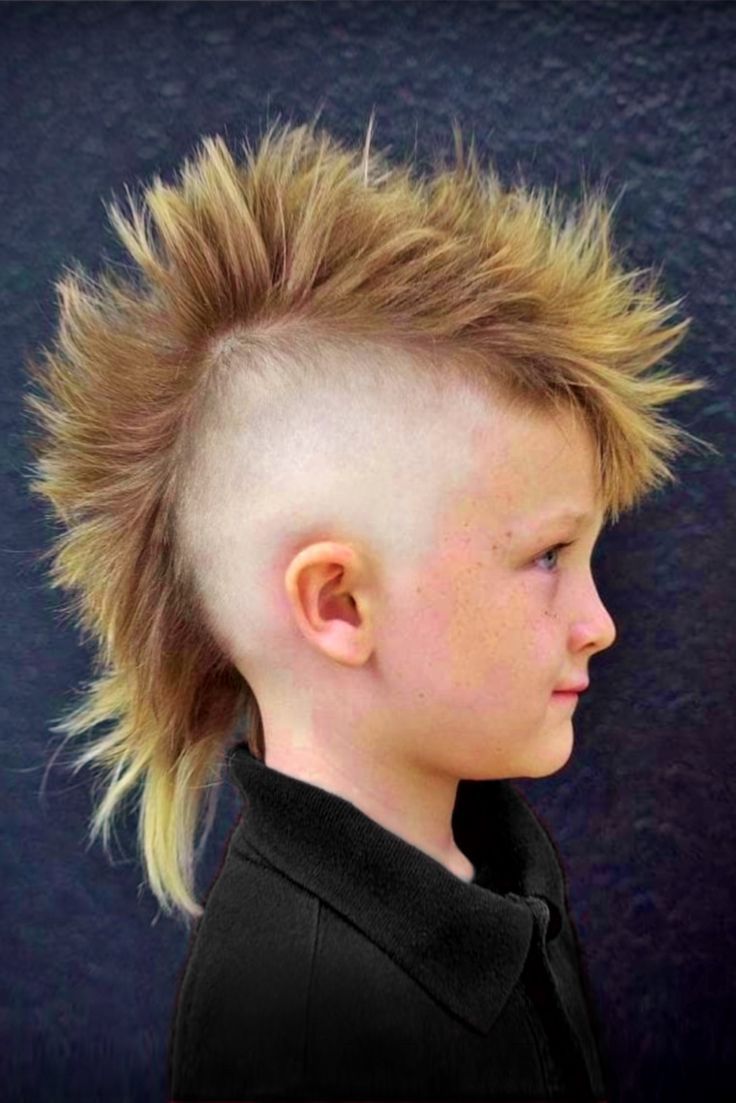
The Mohawk, a punk staple, made its way into mainstream 80s fashion. This bold style features shaved sides with a strip of longer hair running from the forehead to the nape of the neck.
In the 80s, boys experimented with various Mohawk widths and lengths. Some opted for a narrow strip of hair, while others preferred a wider section. The central hair could be worn short and spiky or long and dramatic. Styling often involved using strong-hold gel or even unconventional products like egg whites or glue to achieve gravity-defying spikes. Colors were often bold and unnatural, adding to the style’s rebellious nature. While the full Mohawk was too extreme for many, the “faux-hawk” (a less dramatic version with shorter sides) became a popular compromise.
12. The Curtained Hair
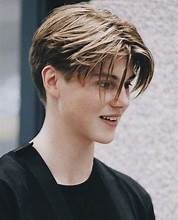
Towards the end of the 80s and into the early 90s, curtained hair became increasingly popular among boys and young men. This style features a center part with hair falling to either side, framing the face like curtains.
To achieve this look, hair was grown out to at least chin length and parted directly down the middle. The sides were left to fall naturally, creating a soft, somewhat feminine look that contrasted with many of the decade’s more structured styles. This cut worked well for boys with straight to wavy hair and was often associated with the grunge and skater subcultures emerging at the time. It required minimal styling, usually just a quick comb-through, making it popular among low-maintenance individuals.
13. The Fade
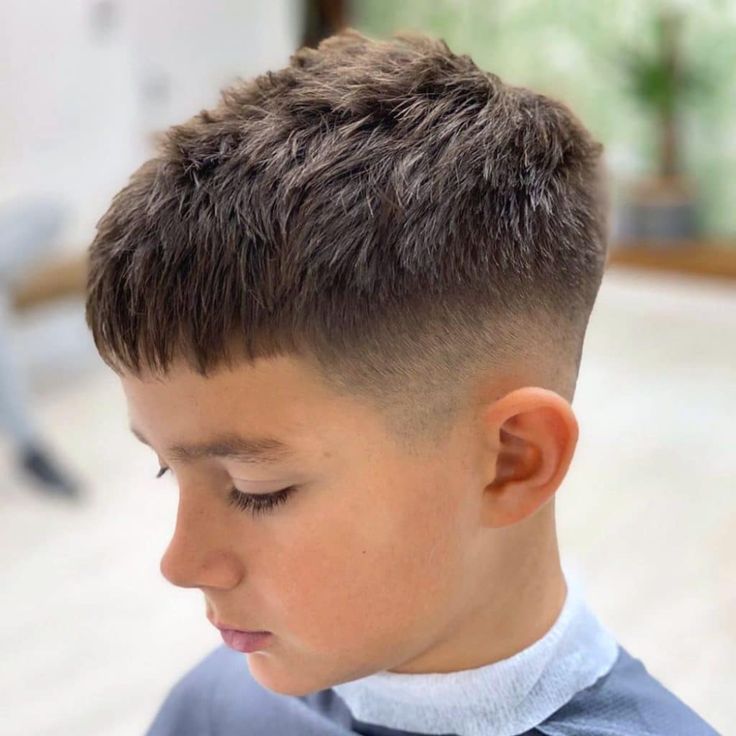
While the fade became more prominent in the 90s, its roots can be traced back to the 80s, particularly in African American communities. This style involves hair gradually tapering in length from the top of the head down to the neckline.
The 80s version of the fade often featured a more dramatic contrast between the longer top and the short sides. Hair on top could be styled in various ways – curly, flat-topped, or even with designs cut in. The fade technique allowed for crisp, clean lines and was often combined with other styles like the high-top fade (a combination of the fade and the flat top). This versatile cut became a staple in hip-hop culture and remains popular in various forms today.
14. The Quiff
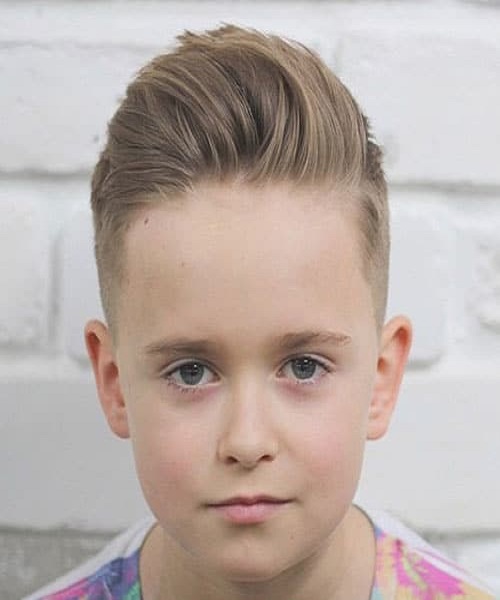
The quiff, a classic style from the 50s, saw a resurgence in the 80s with added volume and attitude. This style is characterized by hair swept upwards and backwards from the forehead, similar to a pompadour but with a more casual, tousled look.
To create an 80s quiff, hair was left longer on top, especially at the front, while the back and sides were cut shorter. Styling involved using a combination of blow-drying and product to create height at the front, often with a slightly messy, textured finish. This style was popular among rock and pop stars, offering a rebellious yet stylish look. It worked well for boys with thick, straight to wavy hair and could be adapted to suit different face shapes and personal styles.
15. The Mullet Fade
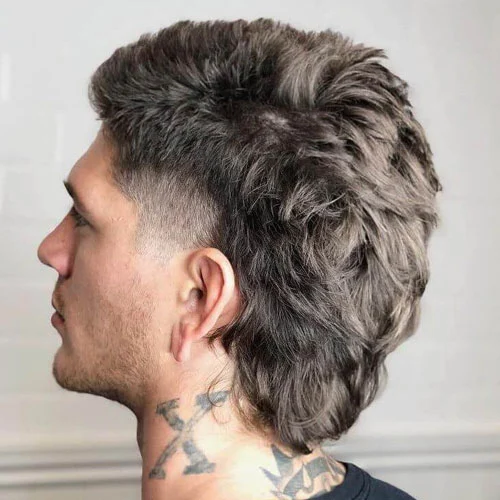
As the name suggests, the mullet fade combined two popular 80s styles: the mullet and the fade. This hybrid cut featured the “business in the front, party in the back” aesthetic of the mullet, but with faded sides for a cleaner, more modern look.
The top and back were cut in the classic mullet style, with shorter hair on top and longer strands at the back. However, instead of simply cutting the sides short, they were faded, creating a smooth transition from the longer top to the skin. This style offered a more polished version of the traditional mullet and was popular among those who wanted to maintain an edgy look while still appearing somewhat groomed.
16. The Spiked Look
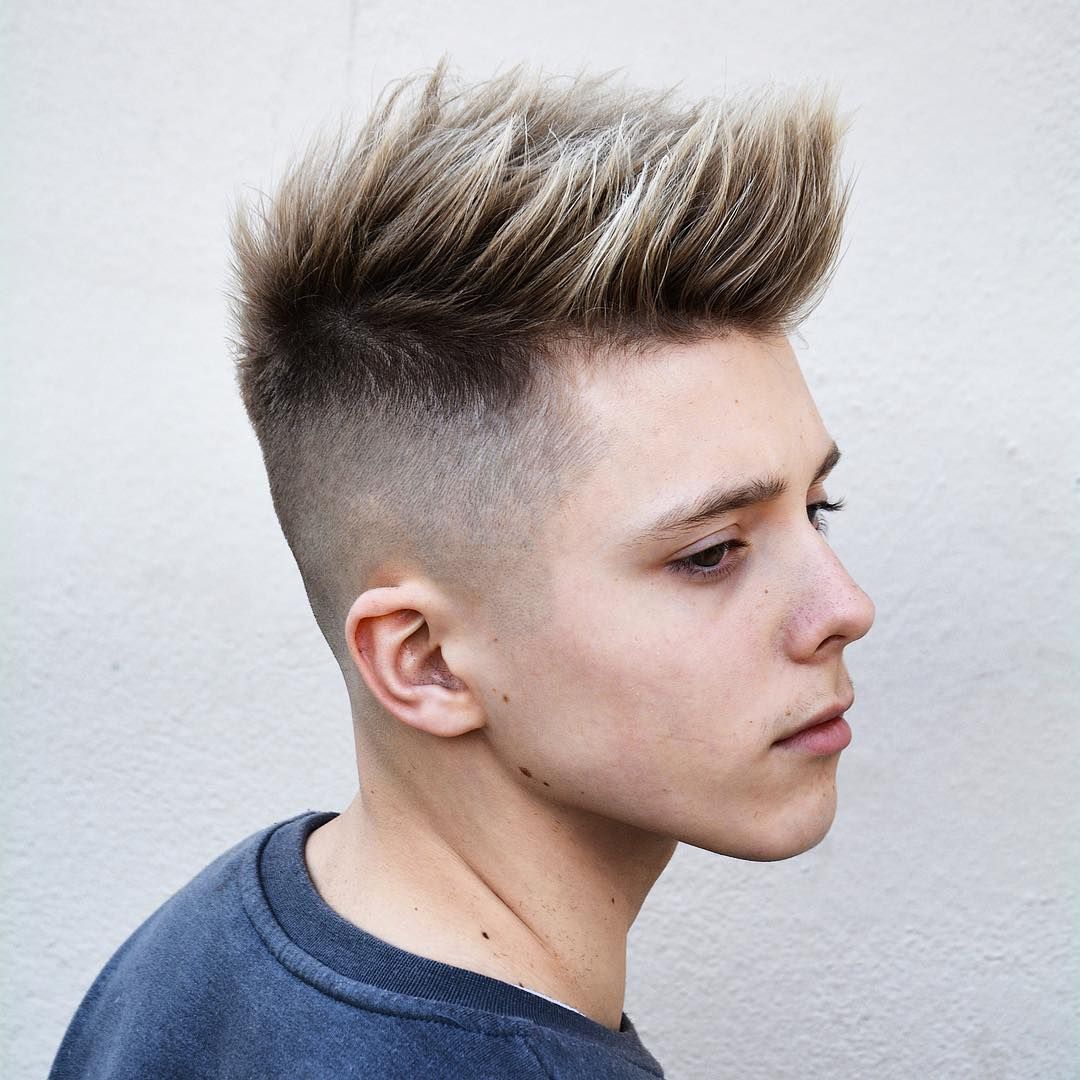
Spiky hair was a quintessential 80s style, embodying the decade’s rebellious and energetic spirit. This versatile look could be adapted to various lengths and was popular among both punk rockers and mainstream pop stars.
To achieve the spiked look, hair was typically cut short to medium length all over. The key was in the styling – copious amounts of strong-hold gel or mousse were applied to damp hair, which was then pulled up into spikes using fingers or a comb. The spikes could be uniform all over or concentrated in certain areas for a more stylized look. This style was often combined with undercuts or shaved designs for added edge.
17. The Shag
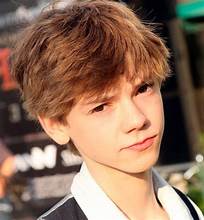
The shag, a layered cut that originated in the 70s, continued to be popular among boys in the 80s. This style features layers of different lengths all over the head, creating a textured, somewhat messy look.
To create a shag, hair was cut into many layers of varying lengths, with the layers typically shorter at the top and sides and longer at the back. The result was a shaggy, textured appearance that worked well for both straight and curly hair. This low-maintenance style was popular among rock musicians and boys who wanted a casual, effortlessly cool look. It could be styled with minimal product for a natural, tousled appearance.
18. The Bowl Cut
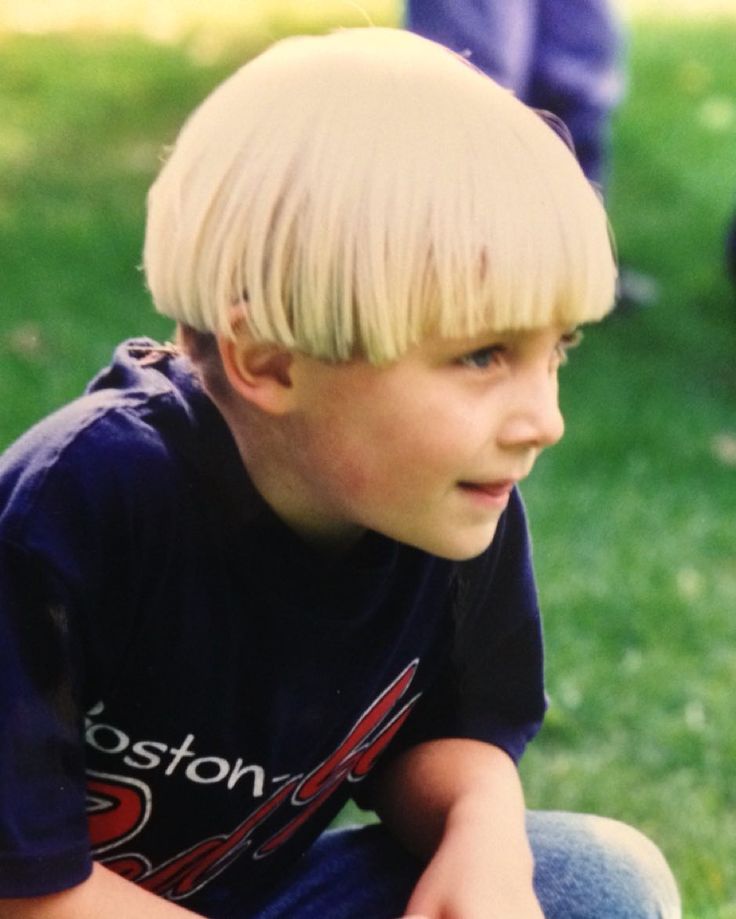
The bowl cut, characterized by its rounded shape resembling an upside-down bowl, gained popularity among young boys in the 80s. This distinctive style features hair cut at a uniform length all around the head, creating a neat, circular fringe.
To achieve the bowl cut, hair was typically cut short at the back and sides, with longer hair on top cut to fall over the forehead and around the ears in a smooth, rounded shape. While it was often considered a practical, low-maintenance cut for children, some older boys and young men also adopted more stylized versions of this look. The bowl cut could be adapted with slight variations in length and texture to suit different face shapes and personal styles.
19. The Wedge

The wedge, popularized by figure skater Dorothy Hamill in the 70s, found its way into boys’ fashion in the 80s. This geometric style features a short back and sides with longer hair on top, cut at an angle to create a wedge shape when viewed from the side.
To create the wedge, hair was cut very short at the nape of the neck and gradually increased in length towards the crown. The top was left longer and cut at an angle, creating a smooth, sloping line from the crown to the nape when styled. This look worked well for boys with straight, thick hair and offered a sleek, modern alternative to some of the more dramatic styles of the era.
20. The Gelled Wet Look
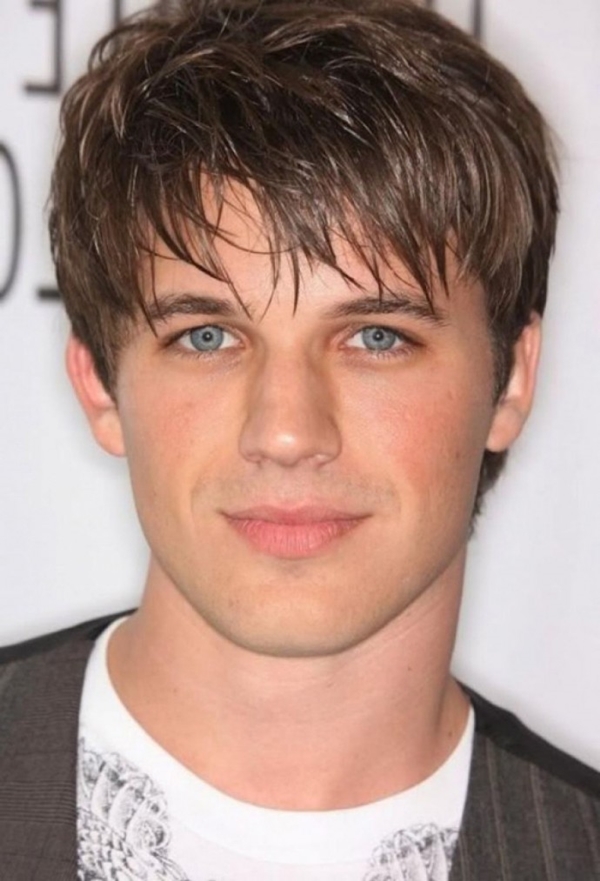
The gelled wet look was a trendy style that gave the appearance of hair being perpetually damp or freshly showered. This sleek, glossy style was popular among pop stars and fashion-forward teens alike.
To achieve this look, a generous amount of wet-look gel was applied to damp hair, which was then combed into the desired style – usually slicked back or parted neatly. The key was to use enough product to maintain the wet appearance throughout the day without the hair becoming crunchy or flaky. This style worked with various hair lengths and could be combined with other cuts like the slick back or side part for a more defined look.
In conclusion, the 80s was a decade of hair experimentation, with styles ranging from the outrageous to the conservative. These 20 haircuts represent the diversity and creativity of 80s boy hairstyles, each reflecting different aspects of the era’s fashion, music, and cultural movements. Whether you’re looking to recreate an authentic 80s look or just draw inspiration for a modern twist on these classics, these vintage styles offer plenty of options for retro lovers and fashion enthusiasts alike.
